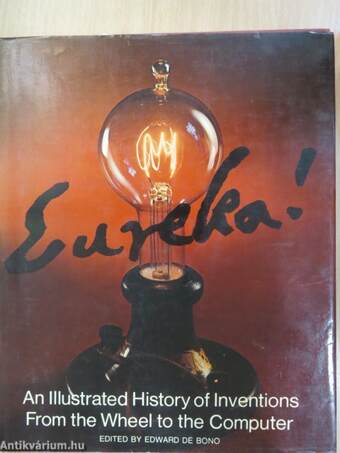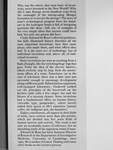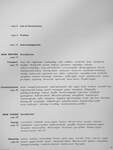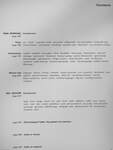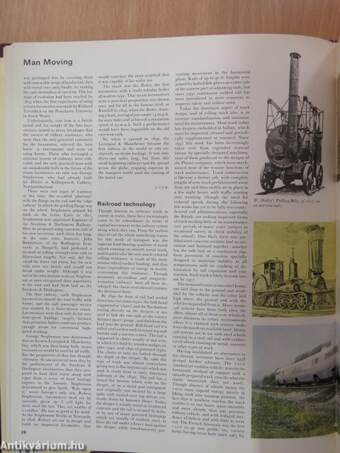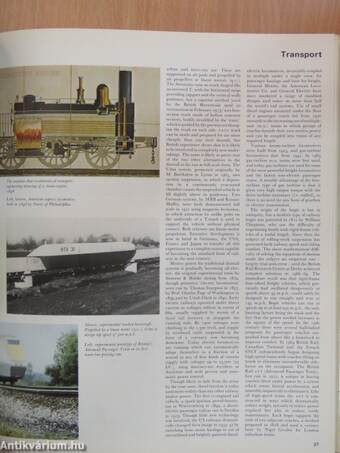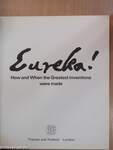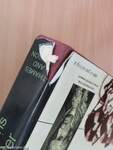1.116.650
kiadvánnyal nyújtjuk Magyarország legnagyobb antikvár könyv-kínálatát
Eureka!
How and When the Greatest Inventions were made/An Illustrated History of Inventions from the Wheel to the Computer
| Kiadó: | Thames and Hudson Ltd. |
|---|---|
| Kiadás helye: | New York |
| Kiadás éve: | |
| Kötés típusa: | Fűzött keménykötés |
| Oldalszám: | 248 oldal |
| Sorozatcím: | |
| Kötetszám: | |
| Nyelv: | Angol |
| Méret: | 31 cm x 26 cm |
| ISBN: | 0-500-01119-2 |
| Megjegyzés: | Színes és fekete-fehér fotókkal, illusztrációkkal. További kapcsolódó személyek a kötetben. |
naponta értesítjük a beérkező friss
kiadványokról
naponta értesítjük a beérkező friss
kiadványokról
Fülszöveg
Why was the wheel, that most basic of inven-
tions, never invented in the New World? Why
did it take Europe seven hundred years from
the onslaught of the stirrup-using Mongol
horsemen to re-invent the stirrup? The story of
man's technological progress from the hand-
axe to the hydrogen bomb is full of intriguing
questions like these—full, too, of examples of
the very simple ideas that anyone could have
had, but only one person did have.
Under Edward de Bono's editorial guidance,
this fully illustrated history describes all the
most important inventions: how they came
about, who made them, and what effects they
had. It is the story not of technology, but of
individual inventions and, above all, of indi-
vidual inventors.
Some inventions are seen as resulting from a
flash of insight, like the twitching frogs' legs that
gave Volta the idea of the electric battery;
others evolved, step by step, from the anony-
mous efforts of a team. Sometimes (as in the
case of... Tovább
Fülszöveg
Why was the wheel, that most basic of inven-
tions, never invented in the New World? Why
did it take Europe seven hundred years from
the onslaught of the stirrup-using Mongol
horsemen to re-invent the stirrup? The story of
man's technological progress from the hand-
axe to the hydrogen bomb is full of intriguing
questions like these—full, too, of examples of
the very simple ideas that anyone could have
had, but only one person did have.
Under Edward de Bono's editorial guidance,
this fully illustrated history describes all the
most important inventions: how they came
about, who made them, and what effects they
had. It is the story not of technology, but of
individual inventions and, above all, of indi-
vidual inventors.
Some inventions are seen as resulting from a
flash of insight, like the twitching frogs' legs that
gave Volta the idea of the electric battery;
others evolved, step by step, from the anony-
mous efforts of a team. Sometimes (as in the
case of television) there was a false start just
successful enough to encourage development
along a different path. Edison had an organized,
well-equipped laboratory; Gockerell worked
out the principles of the hovercraft on the
kitchen table with a few empty tins and the
blower of a vacuum cleaner. Some inventions
had a fundamental effect on human history
(movable type, gunpowder), others merely
added their quota to life's amenities (instant
coffee, the ballpoint pen, the brassiere).
Eighty contributors, all experts in their fields
of study, have written more than 360 articles,
which are divided into five main fields of
human interest and activity. The result is not
only an invaluable source of reference, but an
absorbing study of the ingenious mind of man.
Edward de Bono has been Assistant Director
of Research in the Department of Investigative
Medicine, University of Cambridge, since
1963. He is author of Lateral Thinking and many
other books on the creative process. Vissza
Témakörök
- Idegennyelv > Idegennyelvű könyvek > Angol > Műszaki
- Idegennyelv > Idegennyelvű könyvek > Angol > Művelődéstörténet
- Művelődéstörténet > Technikatörténet > Egyéb
- Művelődéstörténet > Átfogó művek, tanulmányok
- Műszaki > Technika > Technikatörténet
- Műszaki > Technika > Kutatás, fejlesztés
- Műszaki > Idegennyelv > Angol
- Műszaki > Lexikonok, kézikönyvek


